Questions and Answers: April 2015
This one little section of e-gardens is always the most-read part of our publication. If you’d like to be a participant and not just an observer, send Neil your photo and plant question. If you’ll tell him the city where you garden, it will help him fine-tune his answer to your specific situation. And now, on with his replies.
Question: (From Neil: With permission, I’m going to consolidate several questions into one composite here. You’ll know why when you see the length of the answer. I’ll be composing the question myself, but it will be based on having heard variations of this same question everywhere I’ve gone for the past month.) “Neil, my yard is just FULL of weeds. I’ve never seen anything like it. I don’t want to pull them by hand. What can I do to get rid of them?” (Signed: Many readers from all over Texas)
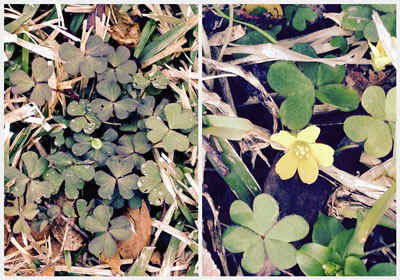
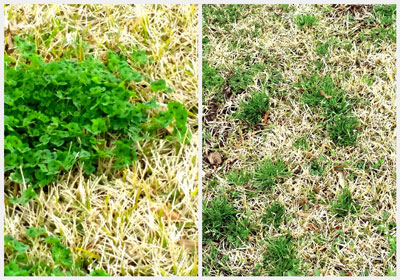
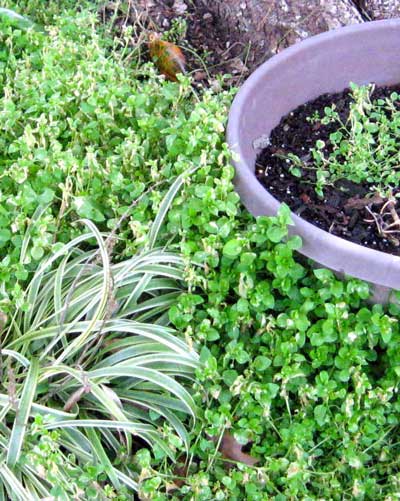
Answer: Weeds can be categorized as grassy weeds (long leaves with parallel veins – think of corn leaves, since it’s a grass) and broadleafed weeds. The latter category may actually have very small leaves, but it consists of plants that are not grasses. Clover, dichondra, oxalis, henbit, chickweed and dandelions are current examples.
You can also break weeds into two other categories: those that grow in winter and spring (cool-season weeds that you’re seeing right now), and those that grow in late spring and summer (warm-season weeds).
Finally, some weeds are annuals and others are perennials.
If you can address those three pairs of identifiers, you can choose the correct weedkiller options.
For the weeds you’re seeing right now, most of those are annual weeds, and they are all cool-season weeds. You can prevent them from showing up in the first place by applying pre-emergent weedkiller granules the first week of September. That is a critical timing. If you wait until September 10, and if you get some early fall rains, you’ll have missed them for another entire year.
For grassy annual weeds, apply Dimension, Team or Halts that first week of September to prevent germination of annual bluegrass (Poa annua), rescuegrass and ryegrass. You do not have a second chance if these weeds germinate and start growing. Pre-emergent prevention is your only option.
To prevent broadleafed weed germination and growth, apply Gallery pre-emergent in that first week of September. If some seeds still germinate, you can eliminate them with a broadleafed weedkiller spray applied either in late fall or in early spring.
To prevent germination of warm-season weeds, pre-emergent applications should be made two weeks before the average date of the last killing freeze for your area. I’ll let you look that up for your county. It’s on Page 3 of my new book, if you have it.
Question: In your opinion, should I remove the large lower limb on the right side of my pistachio tree to provide a more single-trunk look? M.S., Rockwall.
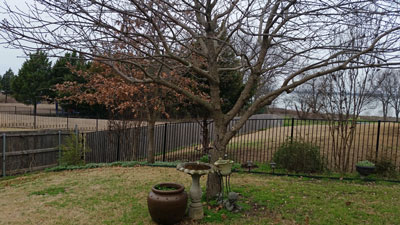
Answer: I don’t have a strong feeling. On one hand, you have such a lovely view out over the hillside, it might be nice to have that branch out of the way. From this angle, I don’t have the feeling that it is making the tree appear to be multi-trunked. I also worry about the limb that is just above it, and whether it curves up so much that the tree might have a windswept look if you took off the lowest branch. Without seeing the tree from several angles, my current vote would be to leave it as is.
Question: I have chickens, and this weed doesn’t seem to bother them, but it stings like crazy if I touch it. The pain subsides fairly quickly, but my hand is tender for up to two days. How can I eliminate it? S.H., no city given.
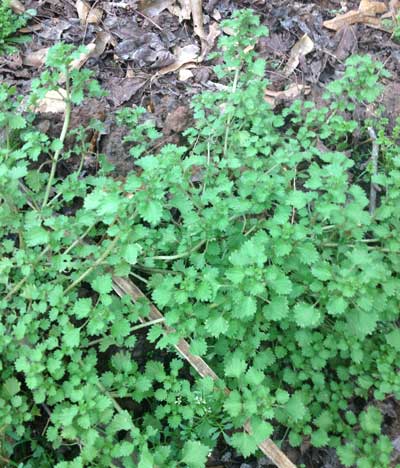
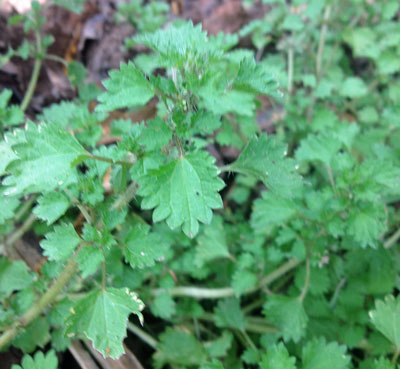
Answer: This is stinging nettle, and it’s not uncommon in Texas. Now that you know what it looks like, you can either cut it with a well sharpened hoe or you could spray it with a broadleafed weedkiller. Your nurseryman will have products containing 2,4-D. I don’t believe 2,4-D by itself would bother the chickens, but read the label thoroughly.
Question: I was told this was an Austrian pine. We have two of them, one in front and one in back. This one has been declining rapidly for the past two months. It appears that it is now almost dead. Is there anything we can do to keep the other tree alive and healthy? What causes this? P., Denton.
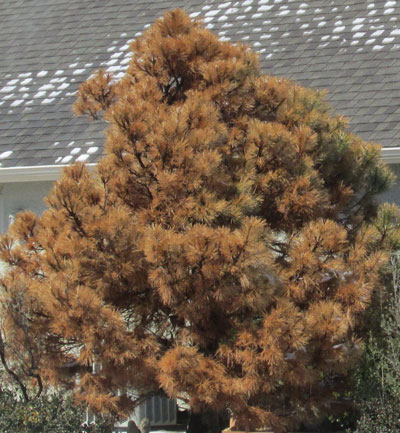
Answer: Pines really struggle with the Texas climate. Types like Austrian and Eldarica have special issues during periods of wet soils. Denton’s red clay soil, where it is present, is pine-friendly, but when conditions move to extremes of drought or moisture, the trees often succumb. The plant disease laboratory at Texas A&M might be able to culture out a specific organism, but in the cases I’ve worked, I’ve not seen a lot of progress in turning the problem around. As for helping the other tree survive, start by making sure the soil drains freely after rainy spells. What you find out from the pathology lab at College Station regarding this tree will also help you know what to do with the other one.
Question: Squirrels are ruining our palm tree. Is there anything we can do to stop them? C., No city given.
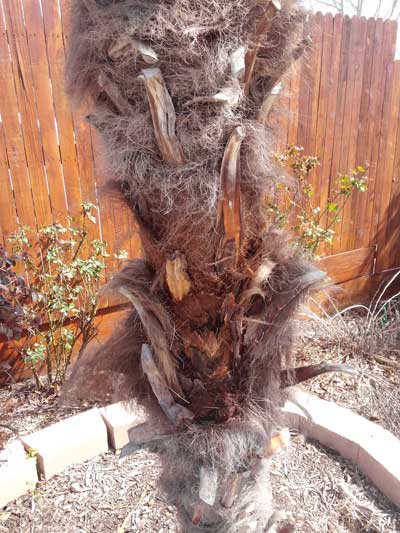
Answer: As you know all too well, squirrels are quite unpredictable. This is the first time this question has come up, and it’s very interesting. I would think that a loose wrap of 2-inch chicken wire, sprayed rust-preventive brown, would discourage them and still not be overly unsightly. It might be that they will change their play habits after a few weeks or months and the guard could be removed. I’ve been told by hundreds of people over the years that the repellent sprays are of almost no value.
Question: When a homeowner wants to add potash to ensure better root growth, what two months of the year would you suggest as being the best two months to apply it? B.M., city not given.
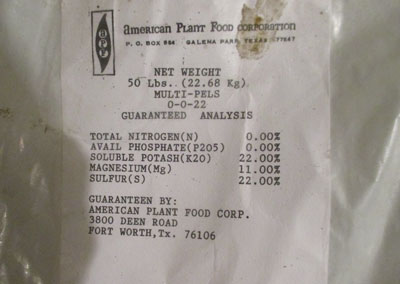
Answer: Whoa. Phosphorus (middle number of the fertilizer analysis) is the element that promotes roots, flowers and fruit. Potassium (K, or potash as your photo shows) increases summer and winter hardiness. You’d be applying the wrong major nutrient for root growth. HOWEVER … almost every soil test I have seen sent back from the Texas A&M Soil Testing Laboratory at College Station has found that we already have extremely high (as in “excessive”) levels of phosphorus in our soils. Most results show their soils to have adequate levels of potassium without the addition of any more. This is precisely why most states, and certainly Texas, recommend use of all-nitrogen or high-nitrogen plant foods and no phosphorus. I hope that puts things back on track!
Question: Our garden plot was filled with weeds last summer. We eventually burned them, because they grew to be more than 4 feet tall. We’d like to turn this into an organic garden, but I know that’s going to be a slow process. I don’t want to destroy the ground in the process. Is there anything we can put on the garden now to kill or prevent weeds that won’t affect our crops that we’re planting? J.P., McKinney.
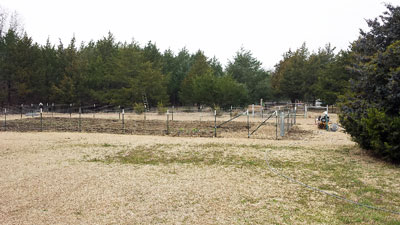
Answer: That will be a lovely garden, and you can get to your goal if you’re patient. New gardens are often filled with Johnsongrass. It’s our tallest, rankest weed, and it can really be discouraging. It is perennial, so it will keep coming back from its roots. As you make your last pass with the rototiller, rake out all of its large roots. Then, I would suggest that you use roll-type mulches between your rows. That will be a little bit cumbersome, because you’ll have to use pretty much the same spacings for all of your crops, that being the width of the roll of fabric mulch. The only weeds you’ll have to contend with will then be the ones that come up within the rows themselves. I would not suggest burning weed rubble. In fact, I’m not sure that’s allowed in our county (Collin) or most others. Just don’t let the weeds go to seed. And as far as anything you could apply to the area now to prevent or kill weeds this spring, that’s a minefield. Other than spot-treating weeds that come up, I’m uncomfortable suggesting anything more than manual control.
Question: I am planning on getting married beneath my huge white oak tree. However, I have no grass there. Is there any kind of grass I can plant there that will cover quickly and be durable? Previously, there was a thick weed that acted as a groundcover, but that’s all that would grow under that big tree. Advice? B.S., no city given.
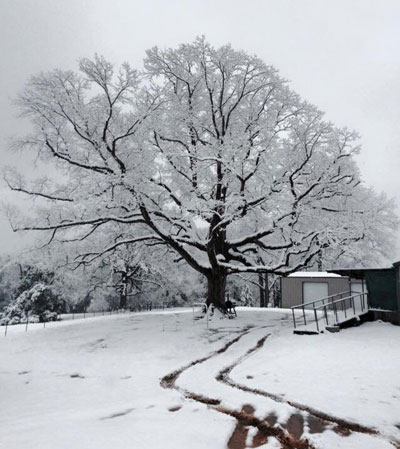
Answer: Lovely tree! If you have a white oak, I’m going to assume you’re in East Texas, and my answer will be tailored accordingly. Heavy shade and failure of grass to perform is, without doubt, the most frequent question I encounter. Here is the information I have in my FAQ section of my website: https://neilsperry.com/faq/10362/, and you’ll find an even longer discussion on my Facebook page at https://www.facebook.com/note.php?note_id=185484858139779. I wrote that four years ago, but it’s all still accurate. Hope those help.
